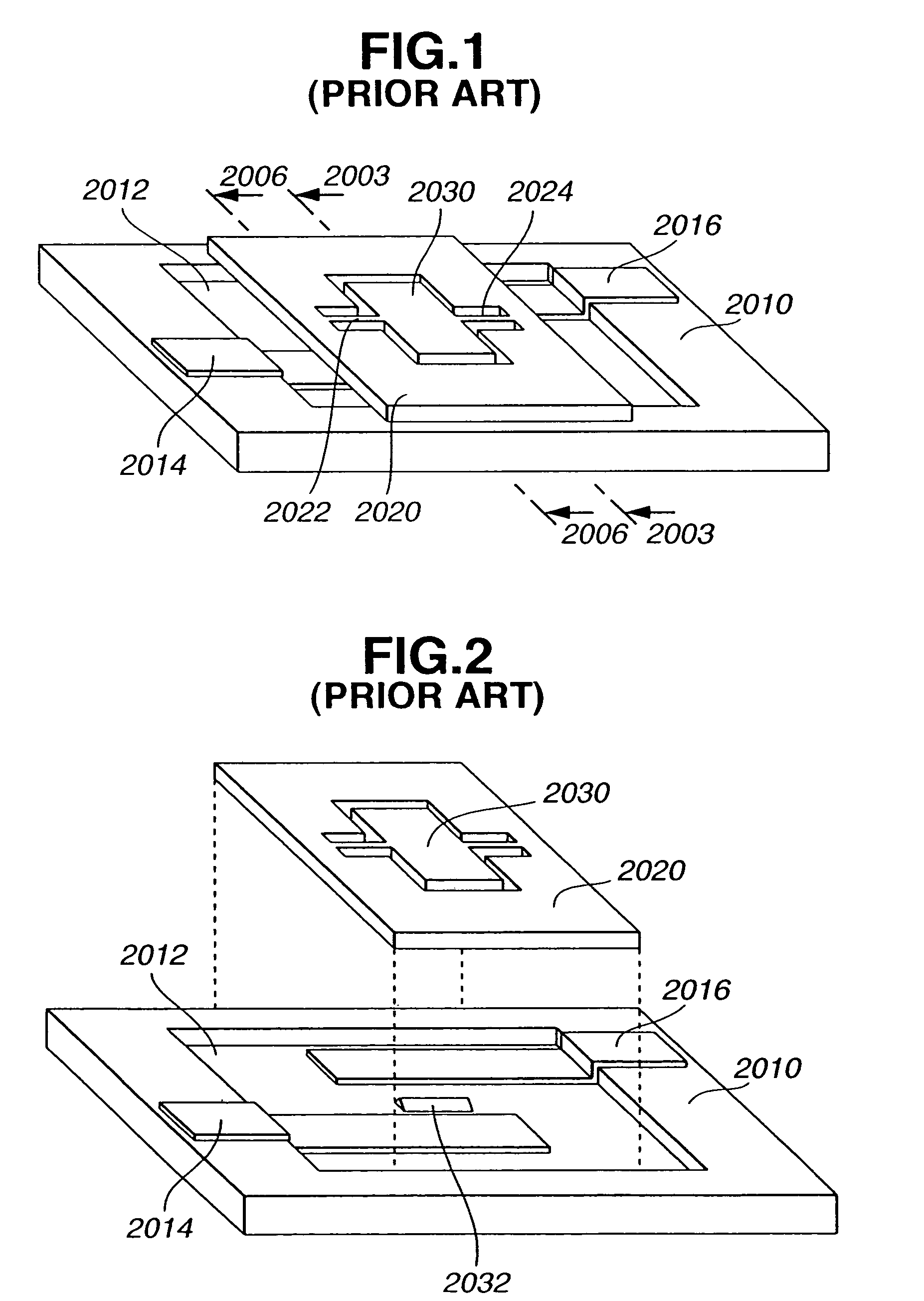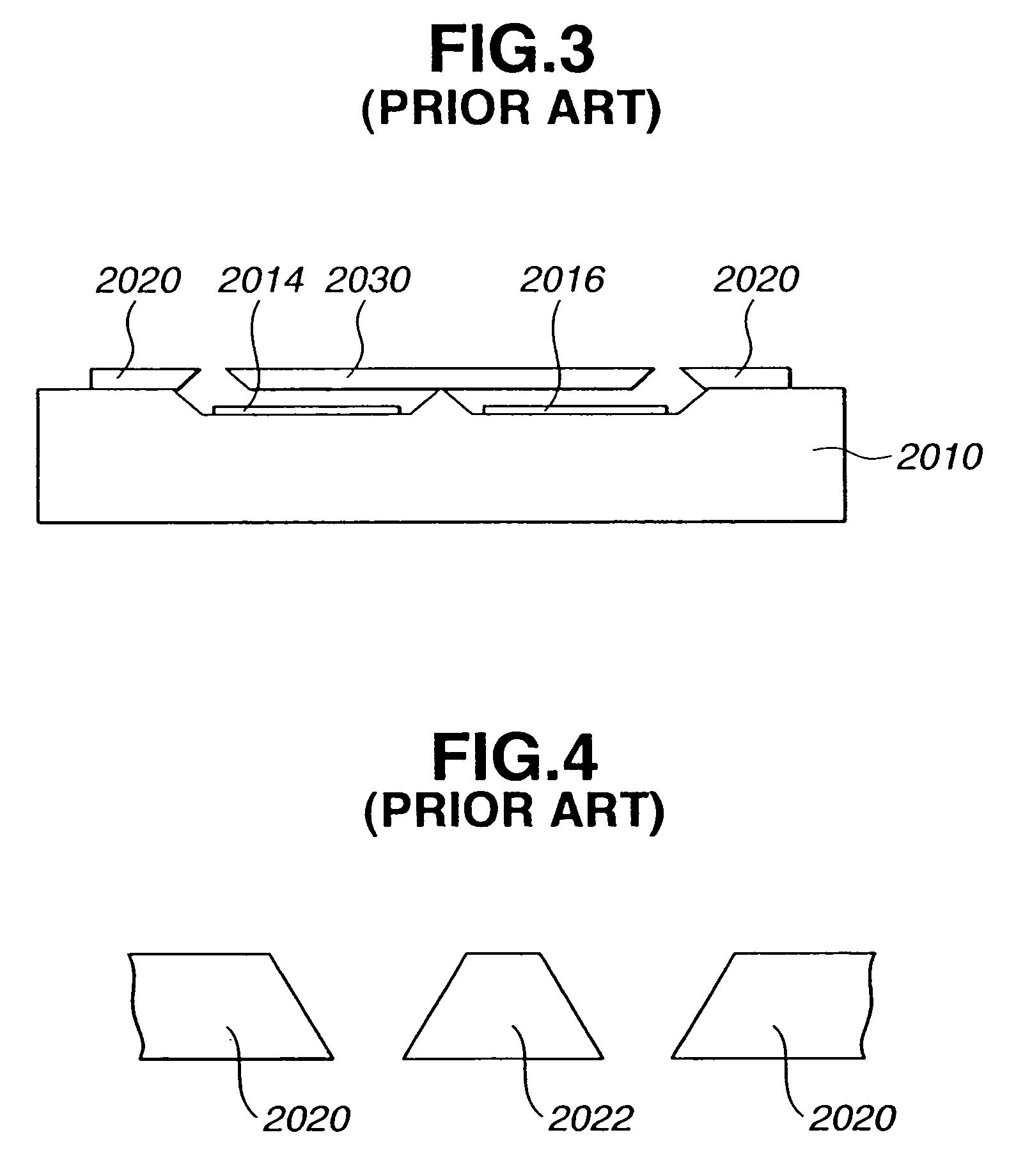Tiltable-body apparatus, and method of fabricating the same
a technology of tilting body and body, which is applied in the direction of instruments, machine supports, other domestic objects, etc., can solve the problems of difficult to achieve accurate driving in such a microstructure, the longitudinal axis of the torsion bar can be easily shifted, and the microstructure can be easily affected by external vibration, etc., to achieve good strength and performance
- Summary
- Abstract
- Description
- Claims
- Application Information
AI Technical Summary
Benefits of technology
Problems solved by technology
Method used
Image
Examples
first embodiment
[0106]A micro-optical scanner of a first embodiment according to the present invention will be described with reference to FIG. 10, FIG. 11A, FIG. 11B, FIG. 12 and FIG. 13.
[0107]In the micro-optical scanner of the first embodiment, a recess 112 is formed on a glass substrate 110. A pair of driver electrodes 114 and 116 and a mirror support 132 of a triangular prism are arranged on the bottom of the recess 112. The mirror support 132 can be omitted. In a single crystal silicon thin plate 120, two sets of torsion springs 128 and 129 and a planar mirror 130 are integrally formed by bulk micromachining techniques. Each of the torsion springs 128 and 129 has a cross section of symmetrical V-shape, as illustrated in FIG. 13. This shape is a heptagonal shape with an internal angle of 289.4 degrees, and has two portions slant to a plane of the mirror 130.
[0108]The mirror 130 has a flat surface coated with a highly-reflective material, and is supported by the V-shaped torsion springs 128 and...
second embodiment
[0131]a micro-optical scanner according to the present invention will be described with reference to FIG. 18, FIG. 19A, FIG. 19B, and FIG. 20. The cross-sectional view of FIG. 19A taken along a line 309 is the same as FIG. 12.
[0132]Also in the second embodiment of the micro-optical scanner, a recess 312 is formed on a glass substrate 310. A pair of driver electrodes 314 and 316 and a mirror support 332 of a triangular prism are arranged on the bottom of the recess 312. In a silicon plate 320, torsion springs 322 and 324 and a mirror 330 are integrally formed by bulk micromachining techniques. Each of the torsion springs 322 and 324 has a cross section of X-shape, as illustrated in FIG. 20. This shape is a dodecagonal shape with four internal angles of more than 180 degrees, is 180-degree rotationally symmetric, and has portions slant to the plane of the mirror 330.
[0133]The mirror 330 has a flat surface coated with a highly-reflective material, and is supported by the X-shaped torsi...
third embodiment
[0158]FIG. 26 is a perspective view illustrating a micro-optical scanner according to the present invention. FIG. 27A is a view illustrating a disassembled structure of the micro-optical scanner to show its internal structure. FIG. 28 is a cross-sectional view of FIG. 26 taken along a line 606, illustrating cross sections of a single crystal thin plate 620 and torsion springs 628 and 629. The cross-sectional view of FIG. 27A taken along a line 609 is the same as FIG. 12.
[0159]Also in the third embodiment of the micro-optical scanner, a recess 612 is formed on a glass substrate 610. A pair of driver electrodes 614 and 616 and a mirror support 632 of a triangular prism are arranged on the bottom of the recess 612. In the silicon plate 620, torsion springs 628 and 629 and a mirror 630 are integrally formed by bulk micromachining techniques. Each of two sets of the torsion springs 628 and 629 consists of a pair of leaf-shaped torsion bars 622 and 623; 624 and 625, and its cross section ...
PUM
 Login to View More
Login to View More Abstract
Description
Claims
Application Information
 Login to View More
Login to View More - R&D
- Intellectual Property
- Life Sciences
- Materials
- Tech Scout
- Unparalleled Data Quality
- Higher Quality Content
- 60% Fewer Hallucinations
Browse by: Latest US Patents, China's latest patents, Technical Efficacy Thesaurus, Application Domain, Technology Topic, Popular Technical Reports.
© 2025 PatSnap. All rights reserved.Legal|Privacy policy|Modern Slavery Act Transparency Statement|Sitemap|About US| Contact US: help@patsnap.com



